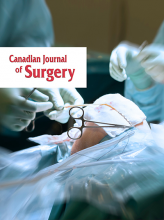Article Figures & Tables
Tables
Term Definition Formula Sensitivity Likelihood that the diagnostic test will indicate the presence of disease when the disease is actually present T+ ÷ (T+ + F−) Specificity Likelihood that the diagnostic disease will indicate the absence of disease when the disease is actually absent T− ÷ (T− + F+) Positive likelihood ratio Indicates how much more likely it is to get a positive test in a person with than without the disease 
Negative likelihood ratio Indicates how much more likely it is to get a negative test in a person without than with the disease 
F+ = false positive; F− = false negative; T+ = true positive; T− = true negative.
Likelihood ratio Interpretation > 10 Strong evidence to rule in the disease 5–10 Moderate evidence to rule in the disease 2–5 Weak evidence to rule in the disease 0.5–2 No significant change in the likelihood of the disease 0.2–0.5 Weak evidence to rule out the disease 0.1–0.2 Moderate evidence to rule out the disease < 0.1 Strong evidence to rule out the disease Attribute* Measure (95% CI) Sensitivity Specificity PLR NLR Single symptom attributes Trigger Standing (1) 0.97 (0.81–1.0) 0.70 (0.47–0.86) 3.2 (1.7–5.9)† 0.04 (0.0067–0.34)† Walking (2) 0.90 (0.72–0.97) 0.04 (0.0023–0.24) 0.94 (0.81–1.1) 2.30 (0.12–43) Alleviator Sitting (3a) 0.83 (0.65–0.94) 0.78 (0.56–0.92) 3.80 (1.7–8.5)† 0.21 (0.083–0.44)† Posture Shopping cart sign (4) 0.80 (0.61–0.92) 0.52 (0.31–0.73) 1.70 (1.1–2.7)† 0.38 (0.17–0.85)† Walking uphill (7) 0.23 (0.11–0.43) 0.78 (0.55–0.92) 1.07 (0.39–2.9) 0.98 (0.79–1.2) Nature Numbness (8) 0.75 (0.55–0.89) 0.41 (0.21–0.63) 1.30 (0.84–1.9) 0.61 (0.28–1.3) Cramping (9) 0.53 (0.35–0.71) 0.35 (0.17–0.57) 0.82 (0.52–1.3) 1.30 (0.78–2.3) Burning pain (10) 0.62 (0.42–0.79) 0.52 (0.31–0.73) 1.30 (0.78–2.2) 0.73 (0.42–1.3) Weakness (11) 0.43 (0.25–0.63) 0.59 (0.37–0.79) 1.00 (0.54–2.0) 0.97 (0.66–1.4) Location Above the knees (5) 0.80 (0.61–0.92) 0.65 (0.43–0.83) 2.30 (1.3–4.1)† 0.31 (0.14–0.66)† Time for relief > 10 min 0.30 (0.15–0.50) 0.78 (0.56–0.92) 1.40 (0.53–3.6) 0.89 (0.69–1.1) Constellation of symptom attributes Triggered with standing (1), alleviated with sitting (3a) 0.80 (0.61–0.92) 0.87 (0.65–0.97) 6.10 (2.1–18)† 0.23 (0.11–0.48)† Triggered with standing (1), alleviated with sitting (3a), located above the knees (5) 0.67 (0.47–0.82) 0.91 (0.70–0.98) 7.70 (2.0–30)† 0.37 (0.22–0.61)† Triggered with standing (1), alleviated with sitting (3a), located above the knees (5), positive shopping cart sign (4) 0.57 (0.38–0.74) 0.96 (0.76–1.0) 13.00 (1.9–91)† 0.45 (0.30–0.68)† Attribute* Measure (95% CI) Sensitivity Specificity PLR NLR Single symptom attribute Trigger Walking (2) 0.96 (0.76–1.00) 0.10 (0.03–0.28) 1.10 (0.92–1.2) 0.43 (0.04–5.3) Symptom onset Predictable (2a) 0.87 (0.65–0.97) 0.37 (0.21–0.56) 1.37 (1.0–1.9) 0.36 (0.11–1.1) Alleviator Standing (3) 0.78 (0.56–0.92) 0.90 (0.72–0.97) 7.80 (2.6–23)† 0.24 (0.11–0.53)† Nature Numbness (8) 0.59 (0.37–0.79) 0.25 (0.11–0.45) 0.79 (0.52–12) 1.60 (0.80–3.3) Cramping (9) 0.65 (0.43–0.83) 0.47 (0.29–0.65) 1.20 (0.78–1.9) 0.75 (0.40–1.9) Burning pain (10) 0.47 (0.27–0.69) 0.38 (0.21–0.58) 0.77 (0.46–1.3) 1.37 (0.83–2.3) Weakness (11) 0.41 (0.21–0.63) 0.57 (0.37–0.75) 0.95 (0.49–1.8) 1.00 (0.69–1.5) Location Calves (6) 0.78 (0.56–0.92) 0.73 (0.54–0.87) 2.90 (1.6–5.5)† 0.30 (0.13–0.66)† Time for relief 1–2 min (11a) 0.57 (0.35–0.76) 0.57 (0.38–0.74) 1.30 (0.76–2.2) 0.77 (0.46–1.3) Constellation of symptom attributes Alleviated with Standing (3), located in the calves (6) 0.65 (0.43–0.83) 0.97 (0.81–1.0) 20.00 (2.8–140)† 0.36 (0.21–0.63)†











